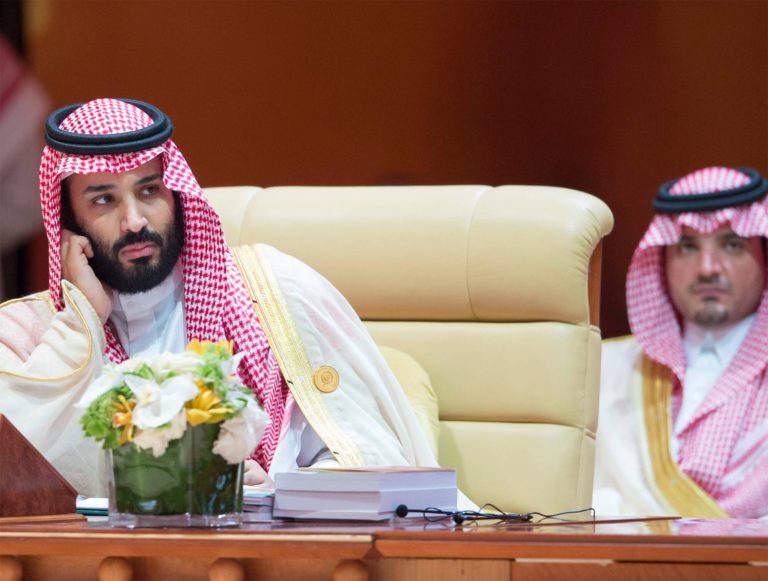Saudi Arabia’s sovereign wealth fund: Borrowing money to make money?

The PIF is the centerpiece of the Kingdom’s Vision 2030 diversification plan. While the effort to list shares of the state oil company, Aramco, in an IPO has been all but abandoned, new efforts to raise revenue for the fund have emerged. This is most recently reflected in the decision to sell the PIF’s share in the state petro-chemical firm SABIC to the state-owned oil company Aramco, which would put about $70 billion in the PIF’s hands to invest abroad. As I’ve written recently, feeding the PIF has becoming a national economic priority.
Saudi Arabia’s Crown Prince Mohammed bin Salman attends during the 29th Arab Summit in Dhahran, Saudi Arabia April 15, 2018. Bandar Algaloud/Courtesy of Saudi Royal Court/Handout via REUTERS
The PIF is now a stark departure from traditional Gulf sovereign wealth funds. It’s more like a private equity fund. The problem is that its investors, or owners, did not sign on for risk or additional debt. That’s if you think of Saudi citizens as its owners.
SWFs across the Gulf Cooperation Council, with the exception of the Kuwait Investment Authority, are relatively new. Most were created in the early 2000s, when oil wealth created surplus revenue that could be placed abroad to grow. These SWFs were used to signal prestige acquisitions in Western brands, from high end retail and banks to auto manufacturers. Other SWFs focused on domestic development and placing state funds in new sectors like renewable energy, which helped the states economically diversify from oil-based economies. All of the SFWs, however, have the purpose of safeguarding and growing national wealth, like an intergenerational savings account or a collective nest egg.
Not all sovereign funds are based on natural resource wealth, but in the Gulf states they are exclusively the product of oil and gas revenues. Foreign reserve assets, or traditional reserves in the Gulf, are also products of oil and gas sales abroad. But these funds may be managed more conservatively and are generally like cash savings, meant to stay liquid and easily transferrable.
The Saudi government’s management of the PIF demonstrates how leadership perceives a time horizon for meeting development goals. A willingness to borrow signals the SWF is more of an active investment fund, or a hedge fund, rather than a safe deposit of shared wealth. A higher risk tolerance in investments of the sovereign wealth fund can indicate a state’s perception of threats to its domestic legitimacy — perform and deliver now, or risk unrest and an unsatisfied population at home.
The shift in Saudi Arabia from the conservative Saudi Arabian Monetary Authority to the new PIF is a repurposing of existing institutions to create a system of new state organizations. This is the Crown Prince’s parallel Saudi state, with its own agenda for economic growth and a very strong hand against internal dissent and alternative ideas about the appropriate role of private enterprise. The other characteristic of the new PIF is its accelerated pace of investments and expansion of the institution itself. The horizon for growth is short. The imperative is to demonstrate quick returns and opportunities for citizens now. The long-term growth horizon is hazy.
For the citizens of Saudi Arabia, the benefits are meant to satiate immediate needs for job growth, and to show demonstrable signs of diversification. This means new entertainment venues, theme parks, and the infrastructure of a changed society and service economy. Whether these investments provide long-term productivity growth or steady returns on investment become secondary priorities. Because the Crown Prince is concerned with a young constituency, his directives to the PIF are largely short-term in scope and equally high risk. He wants results (and returns) now — what remains of the PIF in twenty or thirty years is less of a public policy priority.